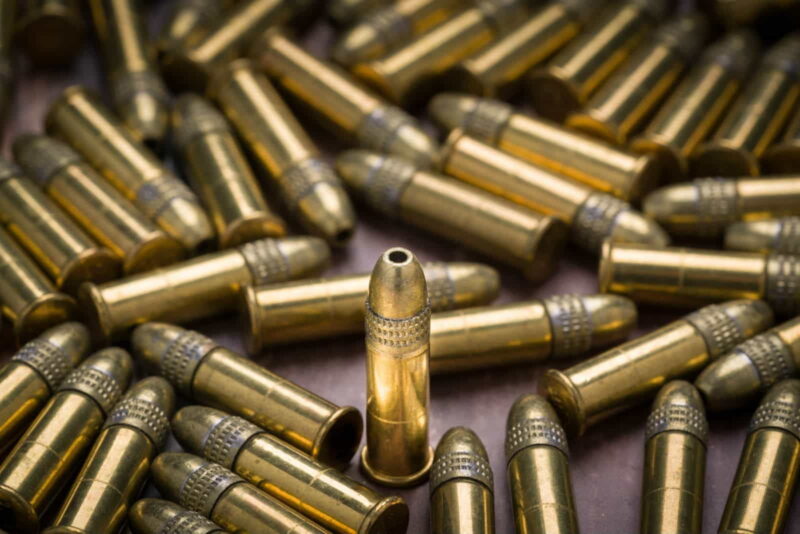Ammunition Pro Llc Things To Know Before You Get This
Table of ContentsAbout Ammunition Pro LlcExcitement About Ammunition Pro LlcMore About Ammunition Pro LlcThe 10-Minute Rule for Ammunition Pro LlcThe 5-Second Trick For Ammunition Pro Llc
The basic components of ammunition are the same for rifle, handgun, and shotgun ammunition. Today we're looking at the what the basic components of ammo are and how they work with each other to discharge a round.It houses the primer and powder. The bullet is seated outdoors end of the instance. When you terminate a bullet out of a semi-auto gun, the gun's extractor lifts the instance from the shooting chamber and it flies out of the weapon. The case is also sometimes described as coverings, brass, or housings.
A weapon's shooting pin strikes a cartridge's guide. The primer is located in the rim of the situation of a rimfire cartridge.
The Main Principles Of Ammunition Pro Llc
Gunpowder following to the instance that commonly has it. It is generally a combination of saltpeter, charcoal, and sulfur.

We call the projectiles for shotshells, which we discharge via shotguns, slugs and shot. Currently that you have a basic understanding of the basic parts of ammunition, you can feel a little more certain in just how your gun and ammunition function!.
The Ultimate Guide To Ammunition Pro Llc
Stay on par with Special Deals, Breakthrough Notification of Sales, and Shop Events
Enjoyable truth: Grains are used to explain the mass of a bullet because right back in the early days of firearms, it was an apothecary's unit of measurement, and an usual action was needed to identify how much lead to use to make actors lead bullets (Ammo Deals). 'Grains' as an unit of step for weight copulates back to ancient times, and stands for the weight of a grain of wheat

(https://fire-directory.com/Ammunition-Pro-LLC_493176.html)For recommendation, the weight of a paper clip is around 16 gr. So, we understand that grains are a measure of mass, and a lot more = heavier, and heavy is great, appropriate? Yes, hefty is good, yet mass of the projectile isn't the only thing you require to think about when selecting a round for your weapon.
The Buzz on Ammunition Pro Llc
This spin is produced by grooves cut or hammered right into the inside of the barrel, which are referred to as 'rifling'. Fun fact, this is the origin of the term "Rifle" ex lover. A gunned musket vs. smoothbore firearm. The effect this spin has on projectiles is a supporting one the bullet rotating maintains the nose directed straight, in the exact same means that a completely spiraled football throw is mosting likely to be far more steady and accurate in trip than a hideous duck, end over end throw.
Exactly how does this relate to grain weight? Envision you're on one of those play area slide carousels, the ones with bars you hold on to while it rotates. Or a circus ride where you're strapped to a board, encountering inwards, which revolves truly fast. When it's rotating slowly, you do not feel a lot, and it's simple to hang on.
Or when it comes to the carnival adventure, you start to really feel larger. The more mass you have (weight), the more you will certainly feel this impact. The same impact occurs with bullets. The heavier the projectile, the more effect a quicker rotate will carry it. This is why you have a tendency to see slower spin rates for much heavier, slower projectiles, and faster twist prices for lighter, higher velocity projectiles.
Getting My Ammunition Pro Llc To Work
There's one more element that we have to consider when choosing a grain weight for our ammo. As hinted at above, bullet velocity, or the rate of the projectile, is a major aspect when determining the ideal grain weight projectile to use. Velocity is influenced by a few major factors, including the type and quantity of propellant (gunpowder), barrel length, and bullet weight.

One of the most typical grain weight rounds for 9x19mm cartridges are 115gr and 124gr. These are typically lead core, completely jacketed (FMJ) rounds. Both of these grain weight cartridges will certainly do well in manufacturing facility 9mm handguns, to typical pistol ranges (approximately 50 yards). 115 grain rounds are one of the most common (and consequently least expensive).